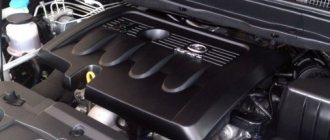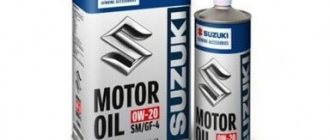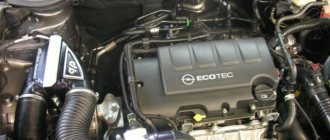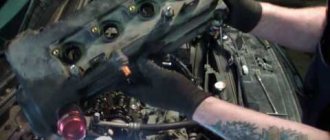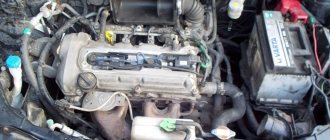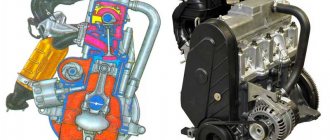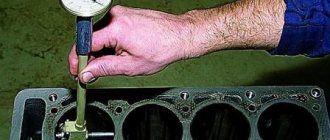When buying a car, drivers are interested in the service life of the 1.8 TSI engine.
This is a fairly important issue that affects the life of the vehicle without accidents. This has become especially important now, when many manufacturers artificially reduce the service life of power units. At the moment, the famous German millionaires, which are still in cars produced more than 20 years ago, are no longer produced. Therefore, it is extremely important to know what you can expect with a certain motor. It is especially important to pay attention to this when choosing a used car. The resource of the 1.8 TSI engine is quite long. But this indicator is influenced by various factors, in particular we are talking about the features of operation and maintenance. Due to this, the service life of the engine may vary significantly.
Specifications
Engines that are designated with this marking are dual-turbocharged, which allows them to use resources as efficiently as possible. Also, unlike many other types of engines, stratified direct fuel injection is used here, which simplifies the control of its power.
This parameter of this power unit depends on the settings. Minimum power – 152 hp.
At the same time, the torque in all versions of the engine is
250 H*m
.
All this indicates the high efficiency of the motor. It is also worth considering the timing system separately.
The main nuance here is the use of a chain in the drive, which significantly increases the mileage between engine maintenance. Also, thanks to the use of a chain in the system, the risk of drive breakage and subsequent damage to parts of the cylinder head, as well as the piston system, is reduced. Fuel consumption depends on the specific model, as well as its settings. But, it should be borne in mind that these engines actively consume engine oil. On average for 10 thousand mileage
Oil consumption is about 1.5 liters. This is a normal expense that you should expect. Therefore, always purchase oil with this in mind before changing it.
On what models is it installed?
Engines labeled TSI were first used in Volkswagen vehicles. This type of power plants for cars is the development of this concern. Accordingly, most of the models of this manufacturer have modifications with a similar engine. Also, such engines are installed on cars produced by Skoda
. These concerns have been cooperating for a long time, and many cars are developed jointly, or using German technologies.
Designers trust this engine. This is evidenced by the wide distribution of TSI among models; in each line there are modifications that have a similar unit. At Volkswagen
Such engines are installed on models:
- Passat
; - Jetta
- Golf
; - Tiguan
.
They can also be found on a number of less popular models of this German concern in our country.
Such an engine is also not uncommon on Skoda models. The following models are equipped with it:
- Octavia;
- Superb
; - Rapid;
- Yeti.
As you can see, you can find such a motor when purchasing cars from these manufacturers. Since 2009, they are not uncommon, so you need to have a good understanding of the features of this power unit. We will consider these points below; it is also worth considering that it also has disadvantages.
Service Features
There are a number of tips that will help extend the life of such engines. They are generally characteristic of all turbocharged units. For example, to clean the injectors, it is sometimes recommended to “clean” them by sharply pressing the gas pedal. This method will avoid deposits in the injectors.
Let's list the main points to pay attention to:
- Use only original oil. As a last resort, you can use analogues recommended by the manufacturer;
- Refuel
only at proven gas stations; even the slightest deviations in fuel quality have a negative impact on the engine. - In this regard, some drivers prefer to use only AI 98 gasoline;
- As already mentioned, the engine sometimes needs to be allowed to run at full power. Therefore, if the place is safe and there are no other cars on the highway, it makes sense to put the gas pedal to the floor;
- Consult what driving features your modification has. Depending on the checkpoint, these nuances may vary;
- The design of this engine is quite complex, so all maintenance work should be carried out only by specialized services.
As you can see, there are quite a lot of features, but they are all quite understandable and uncomplicated. Therefore, this type of power units has spread quite widely.
Comment from VW headquarters
In connection with numerous complaints from owners of cars with Volkswagen TSI and TFSI, the editors of the German magazine Auto Bild asked company representatives to comment on the accusations against them.
A.V.: What exactly were the reasons that led to the problem of increased oil consumption?
VW: Engine oil consumption depends entirely on operating conditions. In particular, frequent stops and starts, high temperatures and short trips can lead to increased oil consumption.
During the manufacture of automotive parts of any type, there is a certain variation in parameters (tolerances) associated with the production technologies used. In some cases, an unfavorable combination of circumstances occurs when parts with a threshold tolerance are installed together, which in turn leads to an increase in oil consumption.
A.V.: So, are you aware of the problem with Audi, Seat, Skoda and Volkswagen cars?
VW: We don’t know about global problems, only isolated cases that we definitely analyze. Any engine consumes oil. Depending on driving style and operating conditions (cold starts, frequent starts and stops, maximum load, short routes, temperature, poor fuel quality), oil consumption can reach up to 0.5 liters per 1000 km. During the first 5000 km, consumption may be even higher. Information about this can be found in the user manual.
A.V.: How many statements related to this problem have been received from owners?
VW: The number of complaints, compared to the number of engines produced, is measured in thousandths of a percent.
A.V.: What do the relevant service instructions (TPI) say about this?
VW: Respond immediately to the customer's request and act in accordance with instructions. As for the improvements, the pressure ratio between the combustion chamber and the crankcase has been optimized. In addition, tighter manufacturing tolerances were used for the pistons and piston rings.
A.V.: Can you say from what production period the problem was fixed?
VW: We introduced optimized components into production in mid-2011. The phenomenon is limited to 2.0 TFSI engines.
A.V.: How many machines could potentially be affected by this problem?
VW: We cannot provide any figures because we continue to assume that these are only isolated cases.
A.V.: Do you expect compensation for costs to clients who encounter a problem?
VW: In each individual case, we ask our service partners to identify and describe the technical reasons. If the application is justified, we take measures to reduce oil consumption. After this, the oil consumed is measured per 1000 km. In justified cases, we make an individual decision in order to meet the expectations of our clients and find a fair and mutually beneficial solution.
A.V.: Are owners of potentially problematic vehicles informed that they may experience high oil consumption?
VW: No.
Disadvantages of the motor
Despite the high technical characteristics, these power units also have disadvantages. They are almost entirely related to the technical features of the engines. Below are the main points that drivers should remember:
- Repairing such an engine is quite expensive. The reason is not only the components. Special equipment is required, as well as skill in repairing these particular units;
- If you use low-quality fuel, its consumption increases significantly;
- Oil consumption increases depending on mileage. Nothing can be done about this; this problem does not affect the driving characteristics;
- The weakest point of the engine is the turbine. It fails most often.
Otherwise, the engine does not cause problems to the owner. But it is worth remembering that on heavy crossovers you need to choose a more powerful option; engines with a volume of 1.8 liters are not able to provide optimal driving dynamics in combination with a massive body.
CDAB 1.8 TSI
The following Skoda engine is the most common in practice. We are talking about a 1.8-liter engine with direct fuel injection and turbocharging. The first modification of this engine was already installed on the facelift Octavia since 2008 and was designated BZB. Since 2009, this engine has been slightly modified, called CDAB and installed on the Octavia II, Yeti and Superb models. From the factory, the engine has 152 horsepower, but the engine is designed with a good reserve and with some manipulations you can get up to 300 mares out of it, I haven’t seen anything else. But this immediately delays the modification of the brakes, suspension and clutch, because the DSG cannot handle such power. He also has an older brother CCZA with a displacement of 2 liters, it was installed on the Octavia RS. The features of this engine include: • turbocharger - one of the most reliable parts • injection into the cylinders with fuel pressure up to 150 bar • timing chain drive • intake manifold with swirl flaps • phase shifter on the intake camshaft • two balancer shafts • one of them drives movement of the cooling pump is through a belt (!!!) The motor is one of the most common. That's why he has a lot of ailments
The ignition coils
are dead . Just. Without trial or investigation. Weakness. But, as a rule, a spark plug that is not changed in time leads to the rapid death of the coil. Longer spark erosion - larger spark plug gap - higher breakdown voltage - greater load on the coil - failure. How to treat: there is no cure. The coils cannot be disassembled. But you can change it. They say red Audi coils last much longer. Well, regular replacement of spark plugs will extend the life of the coils.. Issue price*: replacement of spark plugs or ignition coils - 800 rubles.
Several times cars arrived with the catalyst almost completely clogged. Because of bad gasoline. Without oil. Moreover, strangely, there is no error for a bad catalyst. There is an error in the boost system - it is not blowing enough. And the owner has a complaint - it doesn’t work . This is understandable - the gases have nowhere to go. The very first and simplest check in this case is with the car stopped. When the engine is running from idle, the pedal is sharply pushed to the floor. In this case, the turbine dump valve rod should move sharply back and forth. It's hard to see, but you can see it from above if you look closely. If the cat is clogged, the rod barely moves or does not move at all. This also happens if the air pipe from the turbine to the throttle does not fit tightly. But then you can hear the leak by sound. If the movements of the rod do not inspire confidence, then the next check is visual. Unscrew the first lambda probe. If you don’t have an Iron Man suit, then it would be a good idea to first wait until the engine cools down. Because the temperature on the catalytic converter is quite warm. In the hole formed after removing the lambda, you can examine the condition of the catalyst honeycomb. A flashlight will help you. If you have an endoscope, that’s absolutely wonderful! And if the honeycombs are melted, say hello to the gas station. Usually, when customers find out the price of a new catalyst, they faint. When he regains consciousness, they offer to knock him out completely. Personally, my conscience categorically protests against such repairs. But the reality is that if not us, then a neighboring service will happily perform this procedure. We'd rather have the era of electric vehicles... How to treat: we need to treat the owners of gas stations that sell lousy gasoline. But the catalytic converter needs to be changed - it’s not supposed to be knocked out officially. Issue price*: remove and install catalyst - 4000 rubles.
As summer comes, cars with these engines are driving in droves. With a strange error - P0441 - incorrect flow rate of the fuel tank ventilation system . No more, no less, namely incorrect. There are possible options here - starting from a simply broken valve. That is, it allows pairs to pass through even without voltage applied. It should pass when voltage is applied to it, but it happens that even in a de-energized state it can be blown through. But, as a rule, they do not change it, because the valve does not come separately, but it must be changed together with the plastic line that goes to the inlet. And this is the intake manifold. It also happens that the adsorber itself is clogged. And one more element may fail - the check valve on the adsorber. How to treat: first, correct diagnosis. If there is an electronic valve, you can install it from a 1.6 engine. Then you will have to farm with a hose and clamps. If the adsorber tank itself, Drive2 is full of recommendations on how to open it, wash it, dry it and put it back together. Maybe the check valve can be repaired, it depends on the owner’s imagination. Issue price*: replacement of the adsorber valve with removal of the intake manifold - 3000 rubles. At the same time, by the way, you can clean its insides - 1000 rubles. Without removing the collector - collective farm - 600 rubles. Replacement of adsorber - 600 rub. A mechanic's smile is priceless.
In case of inept dismantling or ignorance, the plastic pipe from the intercooler to the throttle valve breaks. As a rule, this happens when removing the gearbox or other work near the pipe. Not everyone knows about the second fastening; it is hard to see, so sometimes it is not unscrewed and the pipe breaks. A crack appears in the area of the upper fastening of this pipe. It is quite easy to determine such a leak; if you remove the air filter housing, you will see an oily pipe. There's a crack there. Air is sucked through it at idle, or a leak occurs when the turbine blows. Error P0299 occurs for boost pressure. . How to treat: replacing the pipe saves the situation. Well, you can also wrap it with blue electrical tape. Issue price*: remove and install the pipe - 1300 rubles. Wrap the removed pipe with electrical tape - free of charge.
For an unknown reason, the crankshaft speed sensor G28 fails. Moreover, in a rather exotic way - at idle everything works fine, the signal from the sensor is ideal. But as soon as the revs are raised to 5000 or higher, the signal from the sensor is lost and the brain goes into emergency mode. Two errors appear at once - P0321 - the control unit is faulty and P1386 - unreliable signal from the crankshaft sensor . Taking into account the fact that the car cannot be spun up properly while on the spot - the cut-off is at 3500 rpm, then you have to check the sensor while driving - such a check turns out to be fun. And at 5000 rpm, the beautiful sine wave from the crankshaft sensor turns into a straight line. The brain catches the mistake - that’s it, replace the sensor. It is installed, however, not very conveniently. How to treat: replacing the G28 crankshaft position sensor. Issue price*: 2400 rub.
Often there is an incomprehensible situation - the engine is firing on all cylinders, that is, misfires occur randomly. There is also an error - lean mixture , if it has not been erased before. This happens if the car initially arrived for a garage “diagnostics” and the brave craftsmen read the errors with a multi-brand manual. And, explaining everything as bad gasoline, they simply removed them. But even in this case, you can see by the parameters a lean mixture and gaps everywhere. When I see such an outrage, my hands first reach out to remove the tube from the oil separator on the valve cover. The engine jerks a couple of times and stalls. It's understandable. But if you turn off this tube, start the engine and it will work normally, the diagnosis is almost complete. The problem is in the valve inside the oil separator - the membrane bursts and too much air begins to enter the engine, hence the lean mixture. Another indirect sign, by the way, is that the oil filler cap is almost impossible to open when the engine is running - it is sucked in by the vacuum through a torn membrane. How to treat: in a good case, the repair consists of replacing the oil separator. In bad conditions, when the job is started, excessive vacuum in the crankcase turns the crankshaft seal inward. Yes, such a joke happens. The rear crankshaft oil seal between the engine and gearbox leaks a little at idle, and pours like a stream at revs. Then the work of removing and installing the gearbox and replacing the oil seal is added. Issue price*: replacement of oil separator - 1000 rubles. Replacement of the rear crankshaft oil seal with removal of the DSG - 11,000 rubles.
And there was another case... Yes, not just one, but the pumps on these engines leak . You just remove the protection, and there are red tracks on the cylinder block from dried antifreeze. And these paths lead straight to the pump. She's leaking, poor thing. Directly along the actuator rod through the oil seal. Nothing lasts forever, sometimes the seal wears out. Officially, the pump is replaced by removing the intake manifold. But our craftsmen have learned to do without it. How to treat: officially it is necessary to change the entire pump, but in order to save money, they mainly purchase and change only the element. This has not yet affected the quality. Issue price*: remove and install the cooling system pump - 4800 rubles.
Another problem with this engine is related to its mixture formation method. Intra-cylinder. And since fuel does not enter the intake manifold, crankcase ventilation products accumulate in it. Unburned hydrocarbons. Oh, what an abstruse word! Simply put, there is dirt in the intake manifold. And there are also swirl flaps there. In short, the dampers sometimes need to move. What happens when dirt and dampers meet? That's right - they lose mobility and get stuck. And this leads to damage to the axis on which these dampers rotate. How to treat: there are two ways out - either replace the intake manifold, since it cannot be disassembled. Or timely prevention - at least once every 60,000 km the manifold must be removed and cleaned. Issue price*: remove and install the intake manifold - 3000 rubles. Cleaning with chemicals for the client - 1000 rubles. I recommend SHUMA from Mitsubishi.
The next problem can be attributed to design flaws. Defective timing chain tensioner. This is the same thing that should not allow the chains to sag. Always be on your toes and correctly rotate all main shafts in the engine. In addition to the fact that the tensioner operates from the oil pressure in the system, it is also spring-loaded, so that while the pressure is not enough, the chain remains in place. In general, this mechanism was underestimated and sometimes the tensioner still goes back. As a rule, this happens during a cold engine start, just when there is not enough oil pressure. Sensing freedom, the chain certainly slips along the shafts. And here options are already possible. If the engine is lucky, it slips by one tooth and the valves are intact. If the chain has gone three teeth or more, the valves applaud the pistons. It is better to install a modified tensioner. And if you come across such a case, listen to what the mechanics say! Usually it is additionally suggested to replace the lower timing chain cover. The client considers the new cover to be a waste. But in vain! The fact is that when this very bottom chain cover is removed, it is very well glued to the block using the factory sealant. And no matter how hard you try, you can’t remove it without deformation. It bends - it is made of tin. and no matter how you correct it, it won’t become smooth. Basically, put it on the sealant, and everything is fine. But over time, the lid begins to leak - after the warranty. Maybe it still makes sense to pay a little extra and get rid of one problem? How to treat: regularly monitor the condition of the chain - there is a special window for this. Or 93 block of values in ODIS. It shows how many teeth the tensioner has come out. Five or more - it’s better not to risk it and replace it with a modified one. If the chain has already slipped, you can only hope that the valves are intact. Issue price*: timing chain replacement - 11,500 rubles. Condition check - 2800 rub.
It has already been said a hundred times how bad everything is on these engines with oil . That is, the outside of the engine is dry, and you have to add as much as a liter of oil per thousand kilometers. This mess. And the reason for this is lightweight, environmentally-technological pistons of a special shape. The oil scraper rings fit very well in them and do not perform their function. On engines after 2012, this problem was corrected, and on problem machines, the rings + pistons + connecting rods were replaced. How to treat: in the magazine “Za Rublem” they quite competently found out the reasons that lead to the sticking of oil scraper rings, and if you drive without overheating and use good oil, you can avoid this problem. But this is very rare. More often, engines still suffer from oil burns, and this threatens a major engine overhaul. Although now there are craftsmen who resharpen old pistons for new pistons. But we don't do that. Although I remember a case where they reduced oil consumption from two liters to half a liter per thousand without disassembling the engine. The owner soaked the pistons for a day and poured decoking agent into the cylinders. Issue price*: engine overhaul - 37,000 rubles.
The fuel injection pump turns off. Just like that, it just takes it and turns off. Whether the valve inside is breaking or something else... we don’t know. The outside of the pump is no different from the new one. But suddenly the fuel pressure stops increasing. An error message appears for low fuel pressure. The engine falls into emergency mode, the booster pump gives out everything it can. And the car somehow, but still drives. If, at the same time, in group 106 of the measured values, instead of the required 40 bar, there is only 40 bar. 6-7, pump to be replaced. How to treat: no pill. Replacement of injection pump. Maybe in time there will be people who can fix it. Issue price*: remove and install fuel injection pump—2000 rub.
And finally, a small joint of this engine. Oil fogging occurs at the inlet. The high temperature causes deformation of the inlet pipe that goes to the turbine. Becomes an oval instead of a circle. And through this ovality the butter begins to snot. Yes, a nuisance, but still. How to treat: change the pipe. It would be better to install a screw clamp. Is it necessary though? Doesn't affect speed. Issue price*: remove and install turbine inlet pipe - 1100 rubles.
All prices are indicated without discounts, check with the specialist for the current price
If your experience allows you to add useful information to this article, please write to [email protected] .
Resource
You can often hear that the service life of TSI engines is short. In fact, this is a myth. Often, the service books of cars with problem engines indicate that the oil was changed after 30-40 thousand kilometers. At the same time, it is regulated that the recommended mileage for this work is 15 thousand. These are the cars that start to break down
in 100-150 thousand. In fact, with proper and timely maintenance, the engine life reaches 500 thousand kilometers. This allows us to talk about the high reliability of the motors.
It is important for any car enthusiast to have a trouble-free car. Therefore, they are interested in the service life of the 1.8 TSI engine as one of the main indicators. It should be noted that these power units not only show excellent technical characteristics, but also have a number of features that significantly increase their service life.
Engine life 1.6 MPI
All three generations of Skoda Octavia cars were equipped with this engine. The engine, made using Volkswagen technology, has high dynamic characteristics. It is for this reason that most sedans produced before 1998 had 1.6 MPI under the hood. The most successful build is considered to be the Skoda Octavia A5. In 1998, the company's engineers decided to modernize the engine. As a result of the modernization, vehicles equipped with this installation demonstrated a significant reduction in fuel consumption. The marks are set at the following level:
- In the urban cycle, 7.5-8 liters per 100 km;
- In the extra-urban cycle, fuel consumption dropped to 6 liters per 100 km;
- Mixed cycle 7 liters;
Everything would be fine, but the 1.6 MPI engine, after the modernization, began to increasingly exhibit malfunctions and interruptions that were previously unusual for it. And engine overhaul became practically impossible. A mileage of up to 200 thousand kilometers guarantees reliability, but after that unexpected expenses may begin. This should be taken into account when choosing a car on the secondary market. Many car owners note that this type of engine is capable of traveling 400 thousand kilometers or more, but on one condition that scheduled maintenance is carried out on time.
